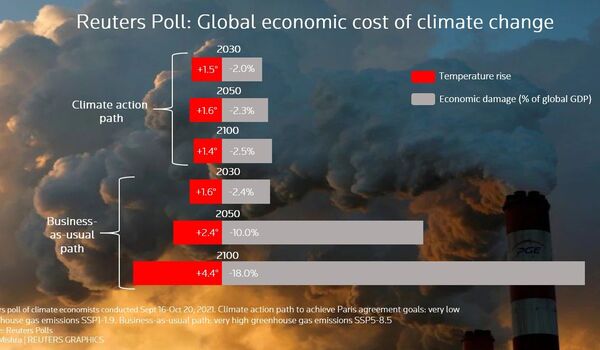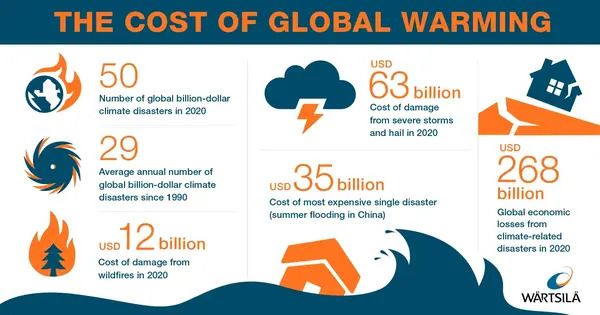Historically, assessments of how climate change will affect global economy have been based on annual temperature fluctuations. However, the extra effects of variability and extremes in rainfall and temperature have largely gone unexplored until now. Using forecasts from 33 global climate models, an international research team led by Paul Waidelich at ETH Zurich completed a groundbreaking study, published in the journal Nature Climate Change, to quantify such consequences on global GDP.
Revealing the additional damage of global warming
A study found that warming the world by +3ºC could result in a 10% reduction in global GDP. Accounting for unpredictability and extremes increases the global costs of climate change. “If we consider that warmer years also bring changes in rainfall and temperature variability, it turns out that the estimated impact of rising temperatures is worse than previously thought,” says doctorate researcher and economist Paul Waidelich. “Therefore, omitting variability and extremes risks underestimating the damage of temperature changes.”
Our results show that the cost of climate inaction is substantial. Some people still say that the world cannot afford rapid decarbonization, but the global economy will also suffer from the impacts of climate change.
Sonia Seneviratne
The cost of climate inaction
Stringent climate action is critical to future economic growth. Limiting global warming to 1.5ºC instead of 3ºC can reduce global losses from climate change by two thirds. “Our results show that the cost of climate inaction is substantial,” stresses ETH Zurich professor, Sonia Seneviratne, a co-author of the study and a Vice Chair of the Intergovernmental Panel on Climate Change’s Working Group I. “Some people still say that the world cannot afford rapid decarbonization, but the global economy will also suffer from the impacts of climate change.”
Global warming of 3ºC also increases the risk of extreme rainfall worldwide, which reduces global GDP, on average, by 0.2 percent — which, at the current size of the global economy, would equal US$ 200 billion. Much of these costs occur in the US and in China, which, unlike warmer tropical regions, are less used to extreme rainfall. However, among the extreme events considered, heatwaves are the most impactful. The study suggests that nearly half of the global economic damage at 3ºC of global warming may be related to extreme heat. Fulden Batibeniz, a postdoctoral researcher at ETH Zurich and the University of Bern explains, “Higher temperatures may seem beneficial for colder countries like Canada, but as we saw in 2021, they also bring much more severe heatwaves, which harm the economy.”

Socio-economic and climatic uncertainties
However, predicting the effects of climatic variability and extremes is difficult, and significant uncertainties persist. When responding to the question, “How much will climate change cost?” The research team admits that the most significant uncertainties are socioeconomic in nature: how long the effects will last and how well society will adjust. However, it is important to better understand how rainfall and climate extremes will evolve. The authors suggest that because the analysis excludes non-economic impacts such as droughts, sea-level rise, and climate tipping points, the entire cost of climate change is likely to be much greater.
The high global cost of climate delay includes a wide range of economic, environmental, and social consequences.
The costs of climate inaction are vast and multifaceted, impacting economies, environments, and societies globally. Proactive measures to mitigate and adapt to climate change are essential to reduce these costs and protect future generations. Investing in renewable energy, enhancing climate resilience, and implementing sustainable practices can help mitigate these impacts and foster a more sustainable future.
















